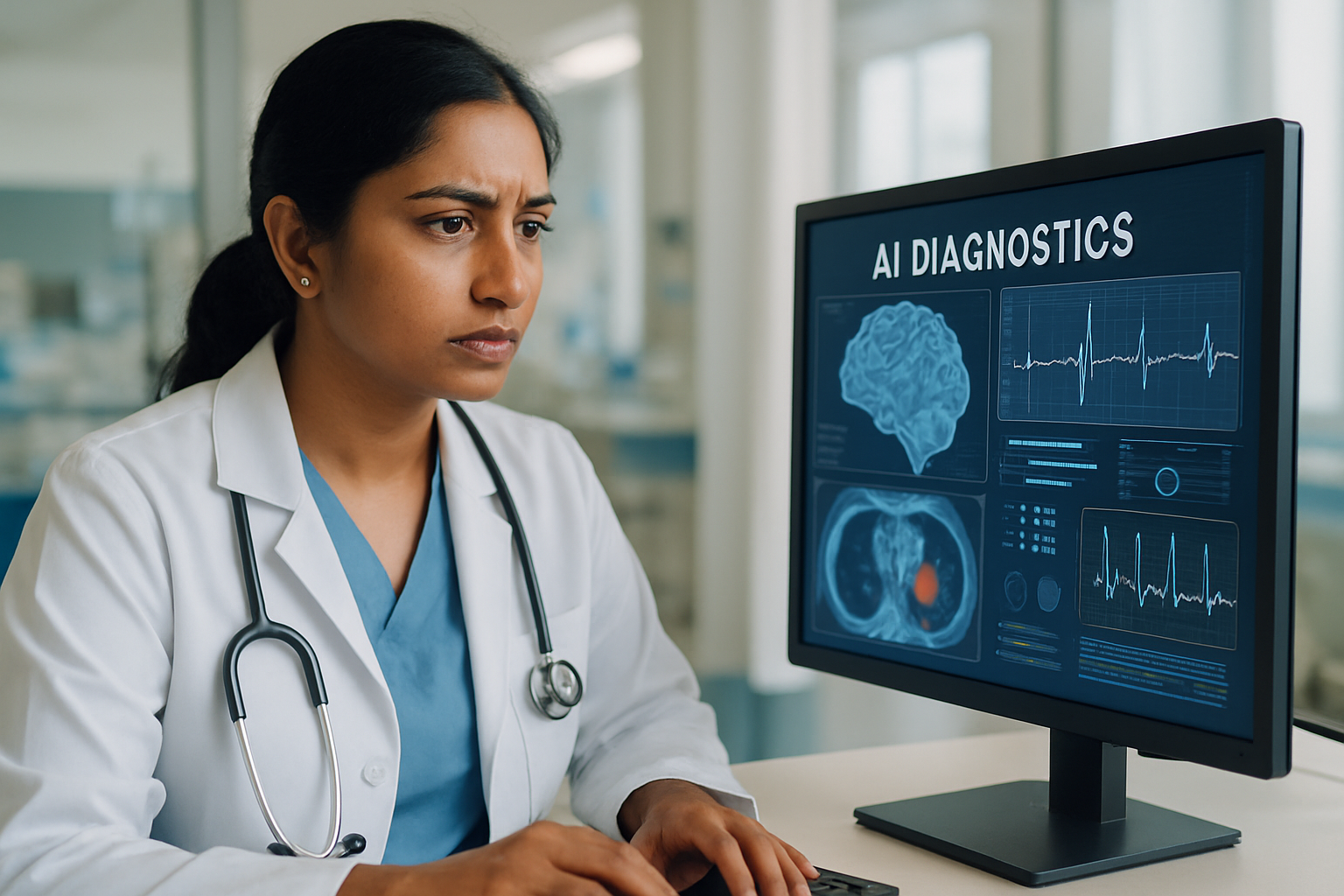Quick Take
- 9-year-old with rare basilar artery migraine diagnosed in minutes after 5 months of failed attempts
- AI platforms analyzed patterns against millions of medical records, identifying condition many doctors never see
- India’s AI medical diagnostics market reached growing 23.10% annually to reach $44.87M by 2030
- Traditional trial-and-error approach consumed months; targeted AI therapy stopped daily episodes within a week
- Case demonstrates AI’s potential in addressing India’s critical healthcare specialist shortage
Subhead: Child’s mysterious fainting spells solved through artificial intelligence after multiple specialists failed to identify extremely rare migraine condition
Artificial intelligence has cracked a medical puzzle that stumped doctors for months, diagnosing a rare condition in minutes that transformed a young boy’s life in Gurugram.
The case involved nine-year-old Manoj, whose daily fainting episodes forced his carpenter father to miss work regularly while monitoring sudden attacks. Despite months of testing and treatment attempts by neurologists, the mysterious condition remained undiagnosed.
The Medical Dead End
“When he came to us, everything had already been tried. Anti-epileptic medications, psychological counseling, multiple specialist consultations — nothing worked,” explained Dr. Shashidhar TB from Artemis Hospital, Gurugram.
The symptoms went beyond simple fainting spells. Manoj experienced crushing headaches, speech problems, severe ear pain, and disturbing visual hallucinations where doctors’ faces appeared as a dog’s face during episodes.
“Every time he touched his ears, my heart would stop. I knew what was coming next,” his father told reporters, describing the family’s growing desperation as conventional medicine failed.
AI Breaks the Pattern
Facing this diagnostic puzzle, the medical team turned to AI platforms including Glass Health and Perplexity AI. Dr. Trisha Srivastava input Manoj’s complete medical history into these systems.
“Within minutes, these systems analyzed patterns that human doctors might miss, comparing the case against millions of medical records worldwide,” she reported.
The AI identified basilar artery migraine with high probability — an extremely rare neurological condition. “Basilar migraine is so rare that many doctors go their entire careers without seeing a case,” according to Dr. Shashidhar.
The diagnosis connected critical clues: a viral fever four months before symptoms began, inner ear infection affecting balance, and brainstem migraines causing visual hallucinations. “Migraines affecting the brainstem can cause visual hallucinations,” Dr. Shashidhar explained.
Swift Recovery
Targeted migraine therapy based on the AI recommendation produced remarkable results. The daily episodes that had plagued Manoj for months stopped completely within a week of proper treatment.
Today, he attends school regularly and plays sports like other children. “My son is playing, studying, and being a normal child again. We have got our life back,” his father said.
Healthcare Market Transformation
The breakthrough highlights AI’s role in addressing India’s healthcare challenges. The country struggles with severe medical specialist shortages, with one doctor for every 1,511 people according to TechSci Research, below WHO recommendations.
India’s AI medical diagnostics market reached $12.87 million in 2024 and expects 23.10% annual growth to $44.87 million by 2030. Healthcare startups like Niramai, SigTuple, and Qure.ai are building AI-driven solutions for Indian markets.
Government programs through the National Digital Health Mission and Ayushman Bharat provide digital infrastructure supporting AI integration. This becomes essential as India reports over one million new cancer diagnoses annually but has limited specialized pathologists available.
Business Impact and Opportunities
The case shows AI’s advantage in complex medical scenarios where traditional approaches consume months while patients suffer. Early adoption delivers measurable benefits in diagnostic accuracy, treatment speed, and resource efficiency.
Implementation faces data privacy concerns and regulatory compliance challenges. India continues developing comprehensive regulations for AI healthcare applications, affecting deployment schedules for medical institutions.
Healthcare startup founders can explore partnerships with established providers, particularly in medical imaging, pathology analysis, and predictive diagnostics where AI shows proven results.
The Future of Rare Disease Medicine
Manoj’s case signals a shift toward AI-powered medical diagnostics, especially valuable for rare conditions where human pattern recognition hits its limits. As medical AI technology advances, it offers scalable solutions for India’s underserved healthcare system.
The impact extends beyond individual cases to system-wide healthcare improvement. For families like Manoj’s, AI technology restored normal life and allowed his father to return to work without constant medical worry.
This breakthrough demonstrates artificial intelligence’s expanding role in treating rare diseases more effectively than traditional diagnostic methods alone, offering particular promise for healthcare systems facing specialist shortages and complex diagnostic challenges.






